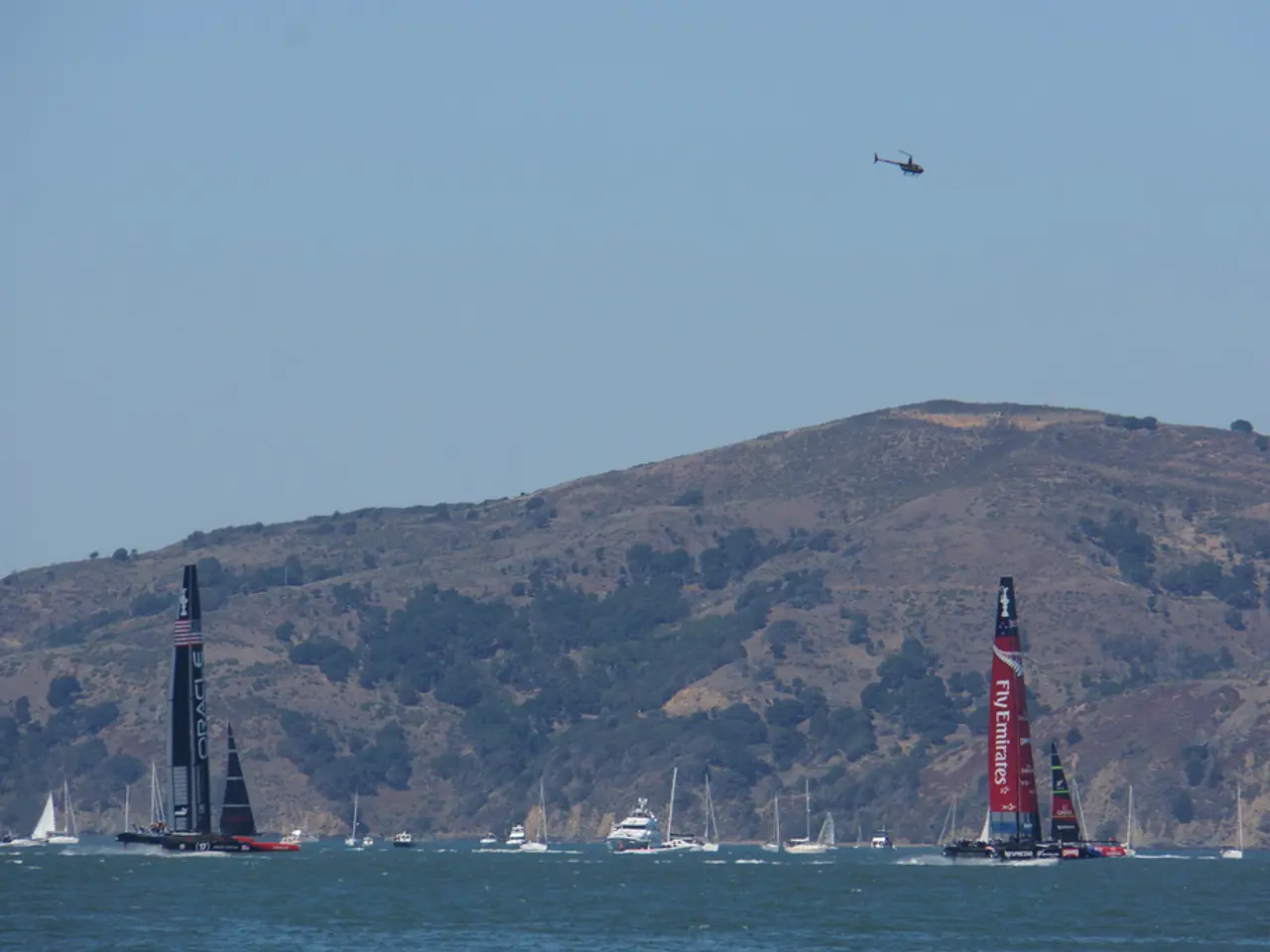Advancements in technology fuel a 14.6% growth in the Crop Monitoring Market
The crop monitoring market is experiencing a surge, driven by rapid advancements in hardware solutions and sensing technologies. With a current market value of USD 2.6 billion in 2022, the market is poised for significant expansion in the coming years [1].
Current Trends
Advanced imaging sensors are becoming increasingly prevalent, with multispectral and hyperspectral sensors offering precise assessments of plant health and soil conditions. These sensors are being integrated with drones, UAVs, and satellites for large-scale, real-time monitoring, improving coverage and operational efficiency [1][2][4].
The integration of AI, IoT, and big data is another key trend. Crop monitoring hardware is often combined with AI-driven analytics and IoT sensor networks, enabling real-time data collection, site-specific decision-making, and predictive analytics [1][4]. Edge computing, which allows on-field data processing through edge computing devices, is also gaining traction, allowing farmers to analyze sensor and drone data locally without relying on limited rural internet connectivity [2].
Smart irrigation and weather stations, providing hyper-local climate data, and smart irrigation systems, automating water delivery based on soil moisture and plant condition measurements, are improving resource efficiency [2]. Drone-based monitoring, with drones equipped with sophisticated multispectral cameras, is facilitating early detection of crop stress, nutrient deficiencies, and disease [1][2][4].
Future Growth Prospects
The global agriculture imaging sensor market alone is projected to grow from USD 1.7 billion in 2025 to USD 6.4 billion by 2034, at a CAGR of 15.7%, driven by sensor miniaturization, affordability, and broader adoption including small-scale farmers [1]. The precision agriculture market is expected to surpass USD 12 billion globally by 2025, fueled by increasing adoption of smart technologies such as IoT, AI, drones, and big data analytics [4].
Growth drivers include rising interest in sustainable farming practices, demand for resource optimization, food security concerns, and supportive government initiatives for smart farming and rural connectivity [2][3][4]. Advanced sensing combined with AI-powered analytics will enable more predictive and prescriptive farming, improving yields, resource use efficiency, and climate resilience.
However, challenges remain around cost, data integration, and connectivity in rural areas. Ongoing innovations in affordable hardware and edge computing are addressing these barriers [3].
In summary, hardware solutions such as advanced multispectral/hyperspectral sensors, sensor-enabled drones, IoT devices, and edge computing platforms form the backbone of current crop monitoring trends. The integration of these with AI and big data analytics is transforming agriculture into a highly efficient, data-driven industry. The market outlook is robust, with significant expansion expected as technology becomes more accessible and governments promote sustainable agriculture globally [1][2][3][4].
The sensing and imagery technology segment dominates with a 53% market share, and innovations in imaging technology, such as multispectral cameras, are enhancing the precision of crop scouting [5]. North America and Europe are the leading regions in the crop monitoring market, while the Asia-Pacific region is expected to experience rapid growth [6].
The demand for precision agriculture is rising, creating a competitive edge for businesses providing cost-effective, scalable solutions. The market is expected to grow at a compound annual growth rate (CAGR) of 14.6% from 2023 to 2032 [7]. Key players in the crop monitoring market include Earth Observing System, PrecisionHawk, Cropwise Operations, The Climate Corporation, Yara International, Ag Leader, Taranis, Topcon Corporation, Trimble Inc., and CropX Technologies [2][3][4][5][6][7]. The crop monitoring market is projected to reach USD 9.8 billion by 2032, with the hardware segment growing at a CAGR of 17.4% [8]. The rise of affordable solutions for small-scale farmers is a key development, ensuring that the benefits of crop monitoring technology are accessible to farmers of all sizes.
References: [1] MarketsandMarkets. (2021). Agriculture Imaging Sensors Market - Global Forecast to 2034. [2] Grand View Research. (2021). Crop Monitoring Market Size, Share & Trends Analysis Report By Component, By Application, By Region And Segment Forecasts, 2021 - 2028. [3] Allied Market Research. (2021). Crop Monitoring and Precision Agriculture Market - Growth, Future Prospects, and Competitive Analysis, 2021 - 2030. [4] ResearchAndMarkets. (2021). Crop Monitoring Market - Growth, Trends, COVID-19 Impact, and Forecasts (2021 - 2026). [5] Business Wire. (2021). Crop Monitoring Market - Global Industry Analysis, Size, Share, Growth, Trends, and Forecast, 2020 - 2027. [6] PR Newswire. (2021). Global Crop Monitoring Market Size, Share & Trends Analysis Report By Component, By Application, By Region And Segment Forecasts, 2021 - 2028. [7] MarketWatch. (2021). Crop Monitoring Market - Global Industry Analysis, Size, Share, Growth, Trends, and Forecast, 2020 - 2027. [8] Yahoo Finance. (2021). Crop Monitoring Market to Reach USD 9.8 Billion by 2032 at a CAGR of 14.6%.
Data-and-cloud-computing technologies are playing a significant role in the transformation of crop monitoring, with the integration of AI, IoT, and big data enabling real-time data collection, site-specific decision-making, and predictive analytics.
The global agriculture imaging sensor market, a crucial part of data-and-cloud-computing systems in crop monitoring, is projected to grow significantly in the coming years, driven by sensor miniaturization, affordability, and broader adoption including small-scale farmers.




